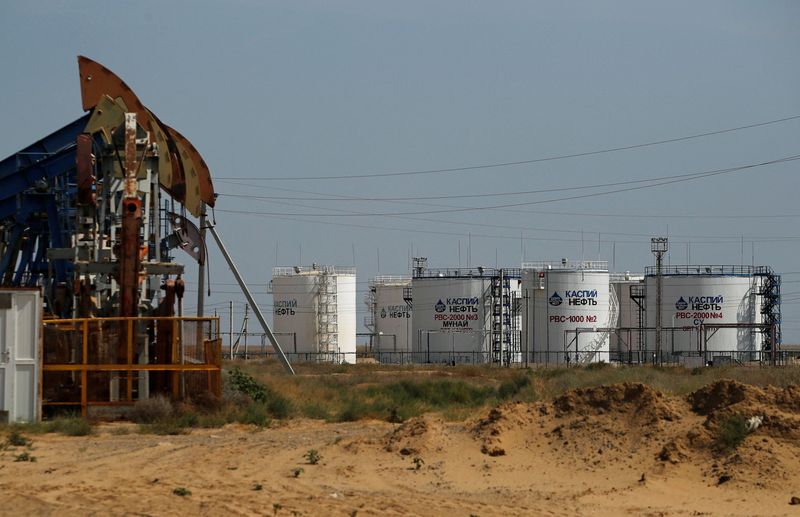
By Arunima Kumar
(Reuters) -Oil prices rose more than 1% on Thursday, extending a rebound spurred by concern over Hurricane Francine’s impact on U.S. output, though a gloomy demand outlook capped gains.
Brent crude futures for November rose $1.01, or 1.4%, to $71.62 a barrel by 0805 GMT. U.S. crude futures for October were up $1, or 1.5%, at $68.31.
Both contracts rose by more than 2% in the previous session as offshore platforms in the U.S. Gulf of Mexico were shut and refinery operations on the coast were disrupted by Hurricane Francine’s landfall in southern Louisiana on Wednesday.
Nearly 39% of oil and almost half of natural gas production in the U.S. Gulf of Mexico was offline on Wednesday, the offshore regulator said. A total of 171 production platforms and three rigs had been evacuated.
“The region accounts for about 15% of U.S. oil production, with any disruptions in production likely to tighten supplies in the near term,” said Priyanka Sachdeva, senior market analyst at Singapore-based brokerage Phillip Nova.
But with the storm set to dissipate after landfall, oil market attention began to turn to lower demand.
“The impact of this variable in the supply side of the equation may be short-lived as eventually the storm will dissipate and the weather will return to a more normal state … the question is whether demand concerns will persist,” said Charalampos Pissouros at brokerage XM.
U.S. oil stockpiles rose across the board last week as crude imports grew and exports dipped, the Energy Information Administration (EIA) said on Wednesday.
The data also showed that gasoline demand in the United States, the world’s biggest oil consumer, fell to its lowest since May. Distillate fuel demand and refinery runs also declined.
Despite worries over Hurricane Francine, the medium-term trend remains bearish for WTI crude, supported by weak demand from China and “growth scare concerns” in the U.S., said Kelvin Wong, senior market analyst at OANDA.

Earlier in the week, the Organization of the Petroleum Exporting Countries (OPEC) cut its forecast for global oil demand growth this year and trimmed its expectation for 2025, its second consecutive downward revision.
Both oil benchmarks tanked on Tuesday after the downward revision.
This post is originally published on INVESTING.



